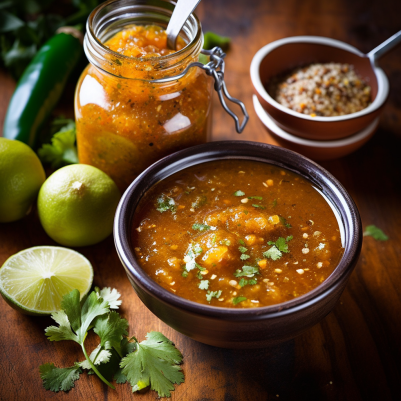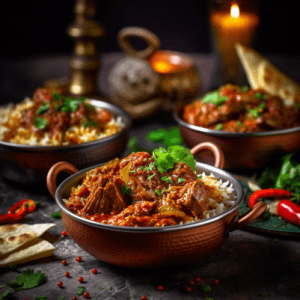Please note that some of the links on this website are affiliate links. I will earn a commission if you decide to make a purchase after clicking through the link. As an Amazon Associate I earn from qualifying purchases.
Welcome to the Mojo FAQ! Whether you’re a culinary enthusiast or simply curious about this vibrant sauce, you’ve come to the right place. Mojo, a traditional Cuban sauce, adds a burst of flavor and zest to numerous dishes, creating a delightful culinary experience. In this FAQ, we’ll explore the origins, variations, uses, and much more about Mojo.

- How is Mojo used in Cuban cuisine?
Mojo is a versatile sauce used in Cuban cuisine as a condiment, marinade, or flavor enhancer for various dishes. It adds a tangy, garlicky, and citrusy kick to grilled meats, seafood, vegetables, and even rice and beans. - What is the history of Mojo in Cuban culture?
Mojo has its roots in Spanish cuisine, specifically the Canary Islands, which were a significant influence on Cuban cuisine. It was brought to Cuba by Spanish settlers and evolved over time to incorporate local ingredients and flavors, becoming an integral part of Cuban culinary tradition. - How does Mojo differ from region to region in Cuba?
Mojo can vary slightly from region to region in Cuba based on local preferences and ingredient availability. For example, in some regions, Mojo may be spicier or include additional herbs and spices. However, the core elements of garlic, citrus juice, and olive oil remain consistent. - What dishes typically use Mojo?
Mojo is commonly used in Cuban dishes such as lechon asado (roast pork), grilled chicken or fish, yuca con mojo (boiled cassava with Mojo), and tostones (fried plantains). It can also be drizzled over rice and beans or used as a dipping sauce for bread. - Can Mojo be used as a marinade?
Absolutely! Mojo is an excellent marinade for meats, seafood, and vegetables. Its acidic nature helps tenderize the proteins while infusing them with its vibrant flavors. Marinating with Mojo for a few hours or overnight enhances the taste and adds a delightful zing to the dish. - What are the health benefits of the ingredients in Mojo?
Mojo contains ingredients that offer several health benefits. Garlic, for example, is known for its antibacterial and immune-boosting properties. Citrus juices, such as lime or sour orange, provide vitamin C and antioxidants. Olive oil, when used in moderation, can contribute to heart health and provide healthy fats. - How long can Mojo be stored, and how should it be stored?
Mojo can be stored in an airtight container in the refrigerator for up to one week. Its flavors may intensify over time. Before using stored Mojo, give it a good stir or shake to recombine any separated ingredients. - Can Mojo be made at home, and if so, how?
Absolutely! Mojo can be easily made at home. A basic Mojo recipe includes garlic, citrus juice (such as lime or sour orange), olive oil, salt, and sometimes additional herbs and spices. Simply blend or whisk the ingredients together until well combined, and your homemade Mojo is ready to enjoy. - What are some variations of Mojo in other cultures?
Mojo has variations in other cultures influenced by Spanish cuisine. In the Canary Islands, where Mojo originated, there are different versions such as Mojo Rojo (red Mojo) and Mojo Verde (green Mojo), each with its unique combination of ingredients and flavors. - How does Mojo Rojo differ from Mojo Verde in terms of ingredients and flavor?
Mojo Rojo typically includes red chili peppers, paprika, and roasted red peppers, giving it a spicy and smoky flavor profile. Mojo Verde, on the other hand, incorporates ingredients like cilantro, parsley, and green chili peppers, resulting in a fresh and herbaceous flavor. - Can Mojo be used in vegetarian or vegan dishes?
Absolutely! Mojo is a fantastic addition to vegetarian and vegan dishes. It can add a burst of flavor to grilled vegetables, tofu, tempeh, or plant-based protein alternatives. Just omit the meat or animal-based ingredients and enjoy the zesty Mojo flavors. - Is there a traditional recipe for making Mojo?
While there are variations of Mojo, a traditional recipe typically includes garlic, citrus juice (lime or sour orange), olive oil, salt, and occasionally additional herbs and spices. However, Mojo recipes may vary from family to family and region to region, each with its unique twist. - How spicy is Mojo typically?
The spiciness of Mojo can vary depending on personal preference and the specific recipe. Some versions of Mojo incorporate spicy chili peppers, while others may be milder or omit the heat altogether. Adjust the amount of chili peppers or hot sauce to achieve the desired level of spiciness. - What are some common substitutions for ingredients in Mojo?
If you’re missing certain ingredients, there are some common substitutions you can make in Mojo. For garlic, you can use garlic powder or granulated garlic. Lemon or grapefruit juice can be used instead of lime or sour orange juice. And if you’re out of olive oil, you can substitute with another mild-tasting oil like canola or vegetable oil. - Can Mojo be used in desserts?
Mojo is primarily used as a savory sauce or marinade and is not commonly used in desserts. Its tangy and savory flavors may not complement sweet dishes well. However, culinary experimentation knows no bounds, so feel free to explore creative ways to incorporate Mojo into desserts if you’re feeling adventurous! - What is the texture of Mojo like?
Mojo has a liquid texture similar to a thin sauce or dressing. It is smooth and typically emulsified, with the olive oil and citrus juice blending together to create a cohesive consistency. The texture can vary slightly depending on the recipe and whether it is homemade or store-bought. - How is the flavor of Mojo balanced in a dish?
The flavors of Mojo are balanced by the combination of garlic, citrus juice, and olive oil. The tanginess of the citrus juice cuts through the richness of the olive oil, while the garlic adds depth and a savory note. The balance of these elements creates the signature Mojo flavor. - What are some tips for cooking with Mojo?
When cooking with Mojo, here are a few tips to keep in mind:
- Use Mojo as a marinade to enhance the flavor of grilled meats, seafood, or vegetables.
- Brush Mojo on meats while grilling for an extra burst of flavor.
- Drizzle Mojo over cooked dishes just before serving to add a vibrant finishing touch.
- Use Mojo sparingly at first and adjust to taste, as its flavors can be potent.
- Can Mojo be used in fusion cuisine, and if so, how?
Absolutely! Mojo’s vibrant flavors can be incorporated into fusion cuisine to add a unique twist. For example, you can use Mojo as a dressing for a tropical fruit salad or as a sauce for fusion tacos, blending Cuban and other culinary traditions to create a delightful fusion of flavors. - What is the significance of Mojo in Cuban celebrations or festivals?
Mojo holds cultural significance in Cuban celebrations and festivals. It is often served alongside traditional dishes during special occasions like Christmas, New Year’s, or family gatherings. Mojo’s presence adds a sense of tradition and enhances the festive spirit of these events. - How has the use of Mojo evolved over time in Cuban cuisine?
While the core elements of Mojo have remained consistent over time, its usage has evolved to accommodate modern tastes and ingredient availability. Chefs and home cooks experiment with different variations, incorporating unique herbs, spices, or regional twists to adapt Mojo to contemporary culinary trends. - What is the difference between homemade and store-bought Mojo?
Homemade Mojo allows you to have complete control over the ingredients and flavors, letting you customize it to your preferences. Store-bought Mojo, on the other hand, offers convenience and consistency. However, the taste of homemade Mojo often surpasses that of store-bought versions, as it can be tailored to your liking. - How can one adjust the spiciness of Mojo?
To adjust the spiciness of Mojo, you can control the amount and type of chili peppers or hot sauce used. Increase or decrease the quantity of spicy ingredients based on your heat preference. Additionally, removing the seeds and membranes from the chili peppers can help reduce the spiciness. - What are some common mistakes to avoid when making Mojo?
When making Mojo, it’s important to avoid a few common mistakes:
- Using too much garlic, as it can overpower the other flavors.
- Allowing the garlic to burn during the cooking process, which can result in a bitter taste.
- Using low-quality or rancid olive oil, as it can negatively impact the flavor.
- Failing to balance the acidity of the citrus juice with the richness of the olive oil, resulting in an imbalanced taste.
- Can Mojo be frozen for future use?
While it is generally recommended to consume Mojo fresh, you can freeze it for future use if needed. However, note that freezing may slightly alter the texture and flavor of Mojo. Store it in an airtight container, leaving some space for expansion, and thaw it in the refrigerator before use. - What are some dishes that pair well with Mojo?
Mojo pairs well with a variety of dishes, including:
- Grilled or roasted meats, such as pork, chicken, or beef.
- Seafood, like shrimp, fish, or lobster.
- Grilled vegetables, such as bell peppers, onions, or zucchini.
- Traditional Cuban dishes like black beans and rice, tostones, or yuca.
- What is the role of Mojo in the overall Cuban culinary scene?
Mojo plays a significant role in the Cuban culinary scene, both as a beloved condiment and a symbol of cultural heritage. It adds depth, tanginess, and a distinctive flavor profile to numerous Cuban dishes, making it an essential element of traditional Cuban cuisine.












[…] yourself to the vibrant flavors of Cuba with this Cuban Mojo Pulled Pork with Citrus-Avocado Salad. Succulent pork shoulder is slow-cooked in a tangy and […]